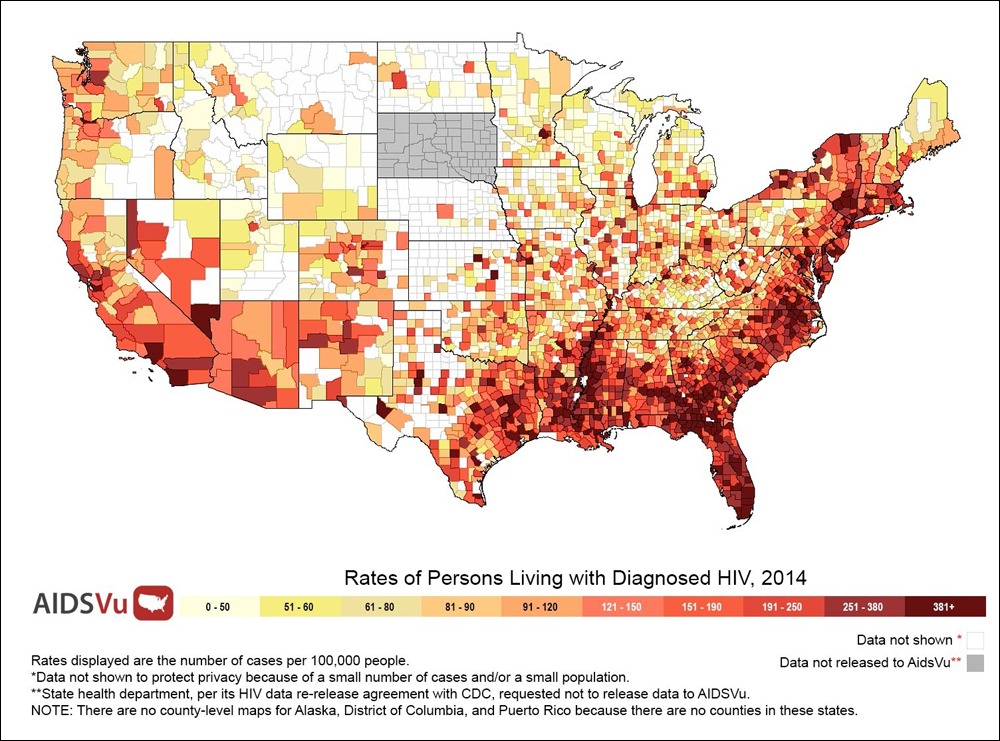AIDSVu releases interactive maps illustrating disproportionate HIV burden in US
AIDSVu — a project led by Emory University’s Rollins School of Public Health in partnership with Gilead Sciences, Inc. — released new interactive maps that demonstrate two-thirds of all new HIV infections in 2015 occurred in 2.5% of U.S. counties, according to a press release.
Using the latest data at the city, county and state levels, the maps showed that U.S. cities with the highest rates of new infections, including Miami; Jackson, Mississippi; New Orleans; Baton Rouge, Louisiana; and Atlanta, are all located in the South. Recently updated county-level data also show a rise in HIV diagnoses in Scott County, Indiana, where an outbreak among opioid and injection drug users resulted in more than 150 new infections from 2014 to 2015. Historically, the county typically reported less than five new cases each year, according to the release.
“AIDSVu maps tell the story of the long-term disproportionate impact of HIV in the South, and of the areas where new patterns of transmission are emerging,” Patrick Sullivan, PhD, principal investigator of AIDSVu from Emory University, said in the release. “The burgeoning opioid abuse and intravenous drug use epidemics, and the resulting transmission of HIV and other infectious diseases, will have dramatic repercussions for how the HIV epidemic evolves in the future. Using local data will allow policymakers and researchers to stay aligned with the realities of where HIV is entrenched and where it is emerging, to strengthen surveillance, and to provide responsive prevention strategies to mitigate these serious risks.”
The maps show that in 2015, key disparities in HIV were observed in:
- Southern states, which represent nearly 37% of the US population but accounted for 52% of all new diagnoses and 49% of deaths among people with HIV;
- black Americans, who make up 12% of the population but accounted for 45% of all new diagnoses; and
- young Americans aged 13 to 24 years — a group in which HIV diagnoses increased by 2% despite an overall 18% reduction in new diagnoses among the U.S. population.
In addition to interactive maps, AIDSVu also provides users with locations of HIV testing, care and comprehensive prevention services, including pre-exposure prophylaxis.
For more information:
AIDSVu. www.aidsvu.org. Accessed June 23, 2017.
Disclosure: Infectious Disease News was unable to confirm relevant financial disclosures at the time of publication.

